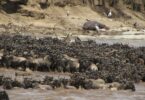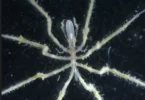Seahorses are some of the ocean’s most enchanting creatures. Belonging to the genus Hippocampus, these little fish are a marvel of marine life with their unique look and intriguing behaviors.
A Diverse Family
There are at least 47 species of seahorses, each with its own charm. From the towering Australian big-bellied seahorse, reaching up to 11.8 inches, to the tiny pygmy seahorse that’s less than an inch long, their sizes vary greatly. Depending on the species, a seahorse can weigh anywhere from 7 ounces to 1 pound.
A Unique Appearance
Seahorses look like a mix of different animals. They have a horse-like head, a monkey-like tail, and a kangaroo-like pouch. Only the males carry this brood pouch, where they fertilize and protect the eggs. Their eyes move independently, much like chameleons, which helps them blend into their surroundings. They’re also adept at changing color, especially during courtship and to communicate with each other.
Instead of scales, seahorses have a tough exoskeleton made of bony plates covered by skin. Their heads sport a crown-like structure called a coronet, and they have pectoral fins near their heads for stability. Despite these features, seahorses aren’t great swimmers and use their dorsal fin, beating rapidly, to move.
Feeding Habits
Seahorses dine mainly on small crustaceans like amphipods. They eat 30 to 50 times a day if food is plentiful. Without a stomach or teeth, they use their snout to suck in prey and then digest it through a simple system.
Where They Live
Seahorses are found in seagrass beds, mangroves, and coral reefs in shallow tropical and temperate waters. Some can even live in estuaries with varying salinities. During colder months, they might move to deeper waters to stay safe. Most seahorses call the West Atlantic and Indo-Pacific regions their home.
Breeding and Social Life
Seahorses were once thought to mate for life, but it turns out their pair bonding lasts only for a few months or during mating seasons. Their courtship involves changing colors and dancing around each other before the female returns to her own area.
During mating, the female deposits her eggs into the male’s pouch, where he fertilizes them. The number of eggs can range from 50 to over 1,500, depending on the species. The gestation period varies from 14 days to 4 weeks, with birthing taking up to 12 hours. Sadly, the tiny seahorse babies face many dangers from predators and currents, leading to a very low survival rate. Seahorses are generally solitary, with males keeping smaller territories compared to the larger ranges of females.
Lifespan
In the wild, we don’t know exactly how long seahorses live, but in captivity, their lifespans range from one year for smaller species to three to five years for the larger ones.
Threats and Conservation
Seahorses face numerous threats from human activities. They’re hunted for traditional medicine, souvenirs, and the pet trade. The Traditional Chinese Medicine Trade alone takes up to 150 million seahorses a year, and the Curio Trade and pet trade also contribute to their decline. Bycatch, habitat loss, and climate change further threaten them as coral reefs and seagrass beds disappear.
The International Union for Conservation of Nature (IUCN) lists 12 of the 42 seahorse species assessed as Vulnerable, two as Endangered, one as Near Threatened, and ten as Least Concern. Many species still need more research to fully understand their conservation status.
Ongoing Efforts
Organizations like Project Seahorse and The Seahorse Trust are dedicated to protecting these incredible creatures. More research is needed to ensure their survival and preserve their place in our oceans.








